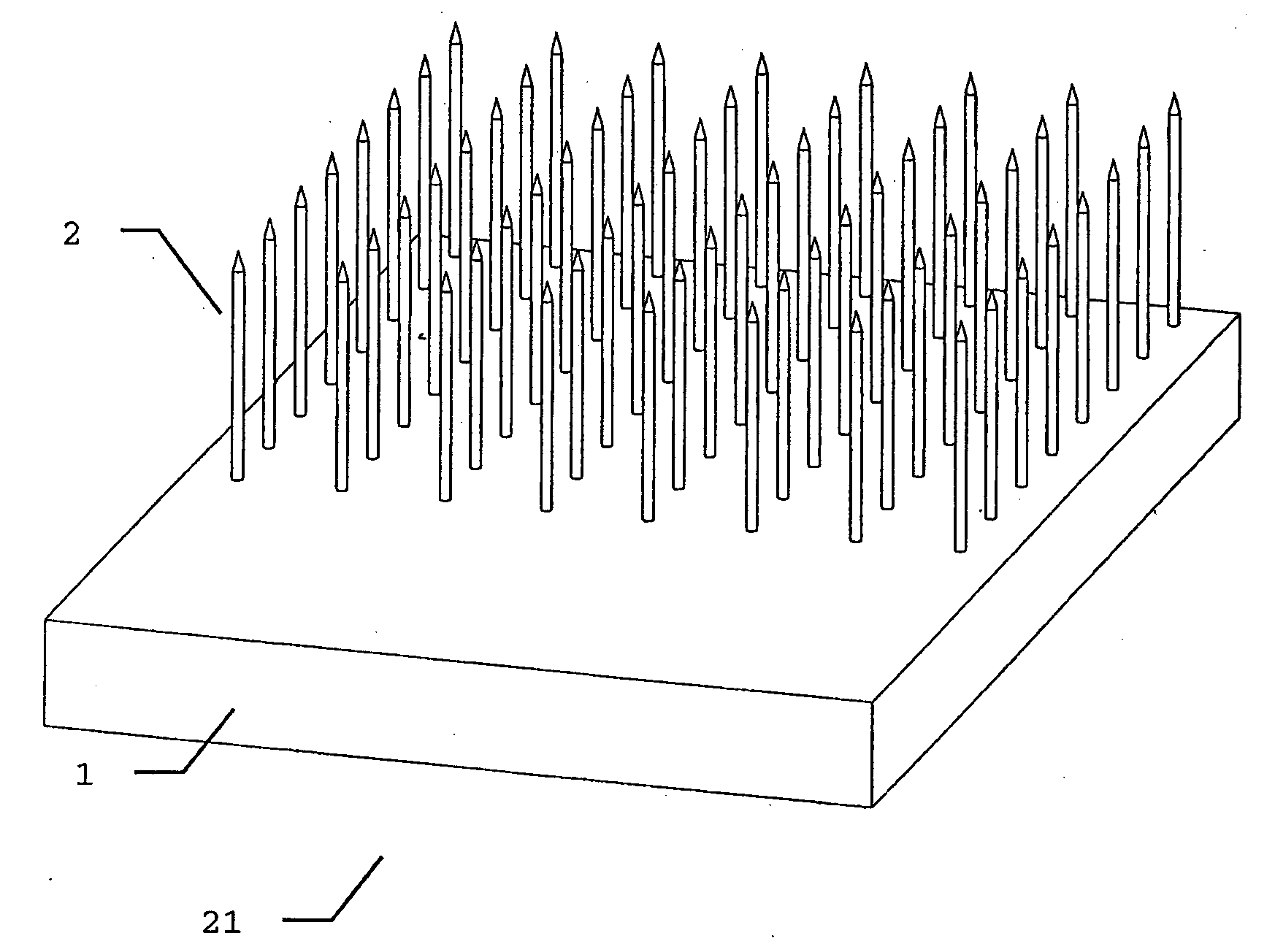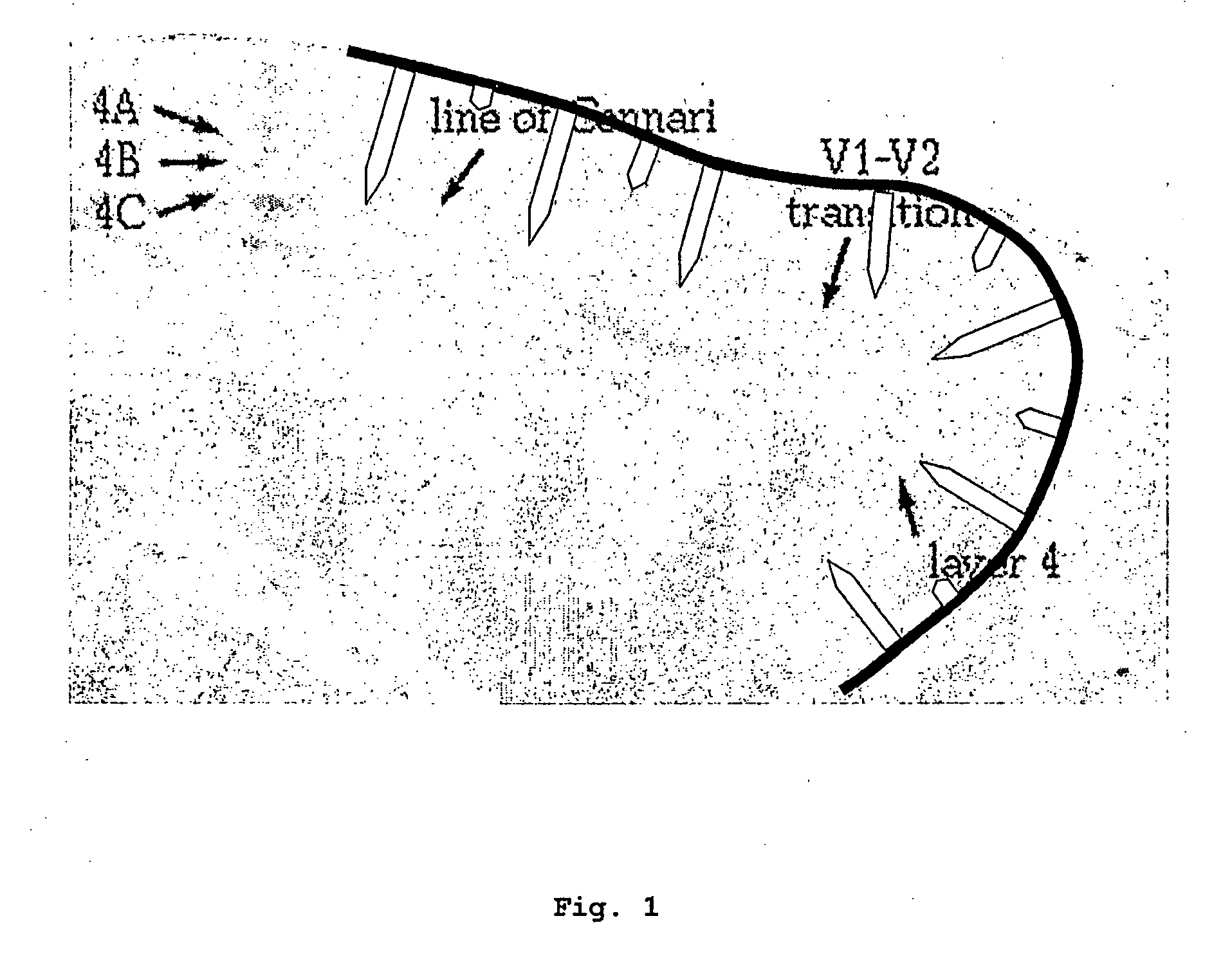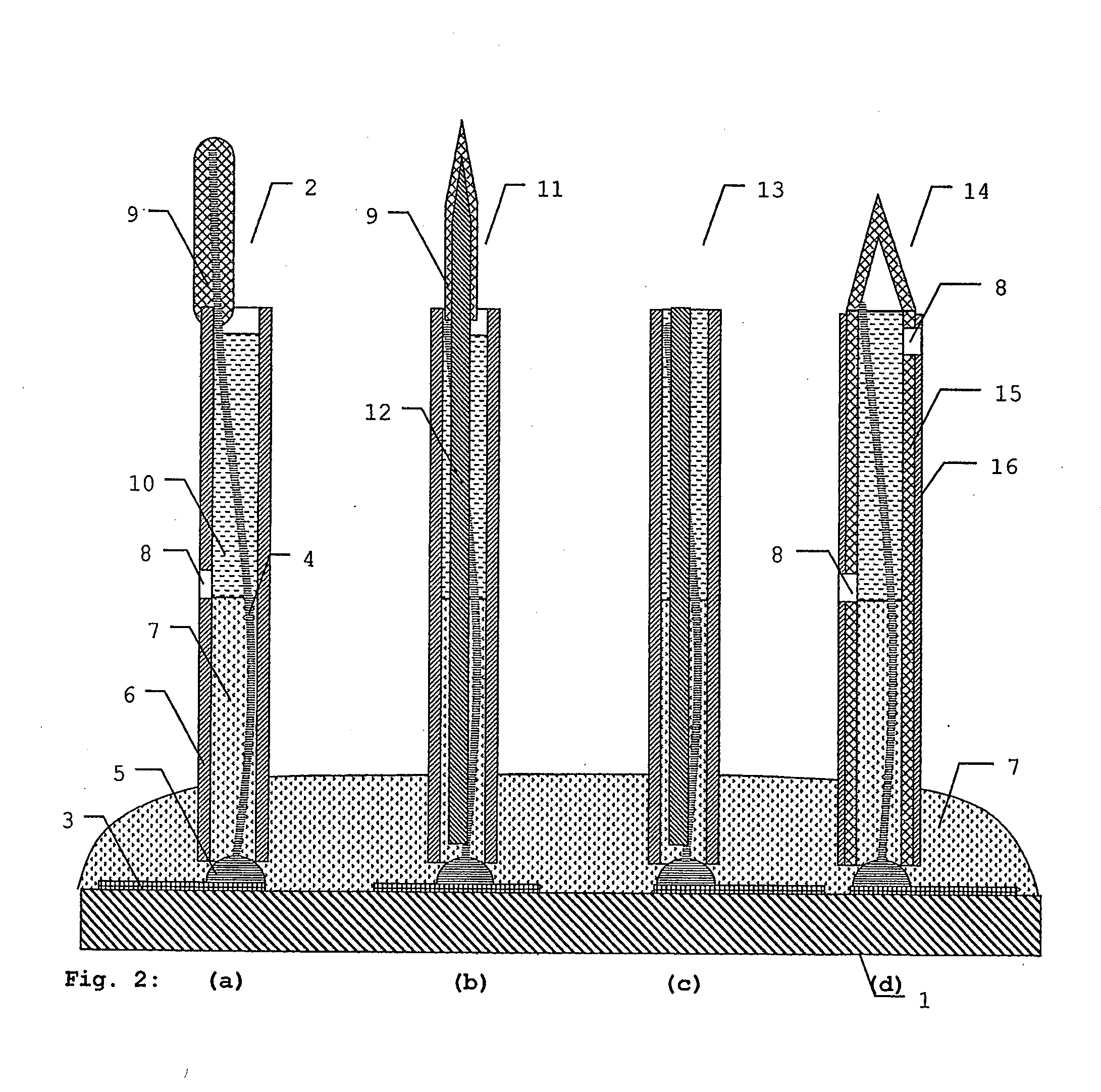Biostable Neuroelectrode
a neuroelectrode and biostable technology, applied in the field of multi-channel neuroelectrodes, can solve the problems of increased electrical losses in each electrode, difficulty in access, and high current required for the stimulation of neurons, and achieve the effect of ensuring the stability of neuroelectrodes
- Summary
- Abstract
- Description
- Claims
- Application Information
AI Technical Summary
Benefits of technology
Problems solved by technology
Method used
Image
Examples
Embodiment Construction
[0023]FIG. 1 represents a possible use of neuro-electrodes for the stimulation and derivation of signals in cortical layers of the brain. The structure of the visual cortex is schematically represented in several layers. It is known from neuro-physiological investigations that different layers of the cortex are responsible for different forms of representation of the information. For example, in the case of the visual cortex the information is conducted from so-called P and M receptor fields, which are responsible for contrast and movement, of the retina into the layer IV. But information regarding absolute brightness goes into the layer I. Since the layer I lies on the surface of the brain, and the layer IV at a depth of approximately 1 to 2 mm, it is required to have electrodes of different length in an electrode array. However, since the depth of the layer IV is irregular, the lengths of the electrodes should randomly deviate from the optimal length, so that at least a portion of...
PUM
 Login to View More
Login to View More Abstract
Description
Claims
Application Information
 Login to View More
Login to View More - R&D
- Intellectual Property
- Life Sciences
- Materials
- Tech Scout
- Unparalleled Data Quality
- Higher Quality Content
- 60% Fewer Hallucinations
Browse by: Latest US Patents, China's latest patents, Technical Efficacy Thesaurus, Application Domain, Technology Topic, Popular Technical Reports.
© 2025 PatSnap. All rights reserved.Legal|Privacy policy|Modern Slavery Act Transparency Statement|Sitemap|About US| Contact US: help@patsnap.com



